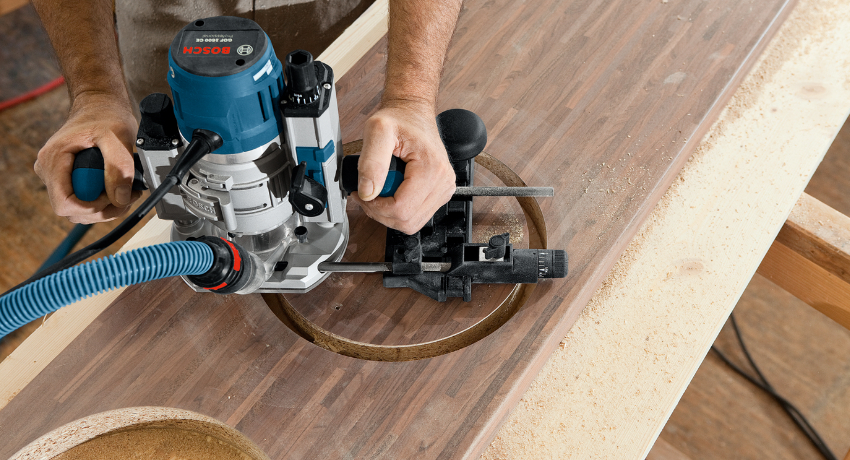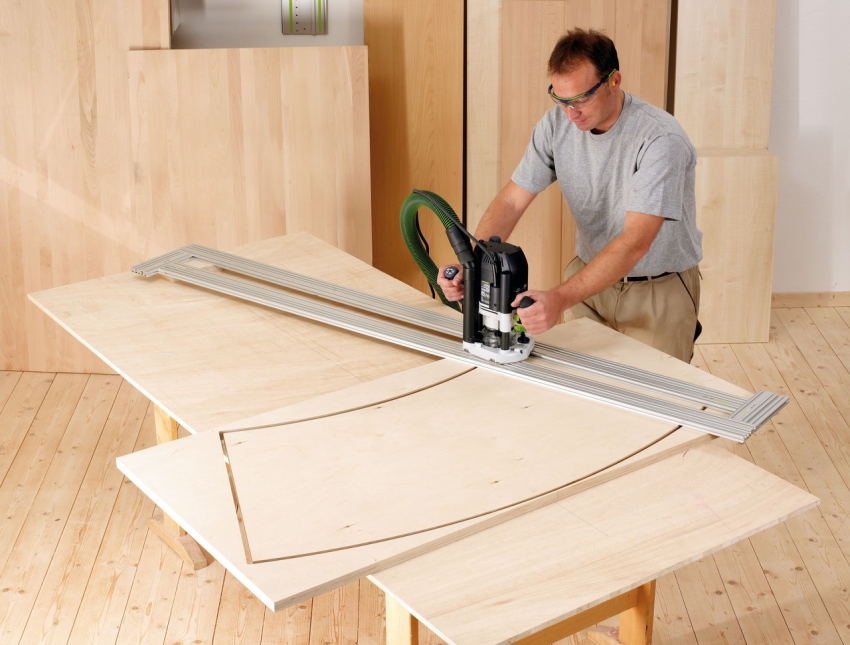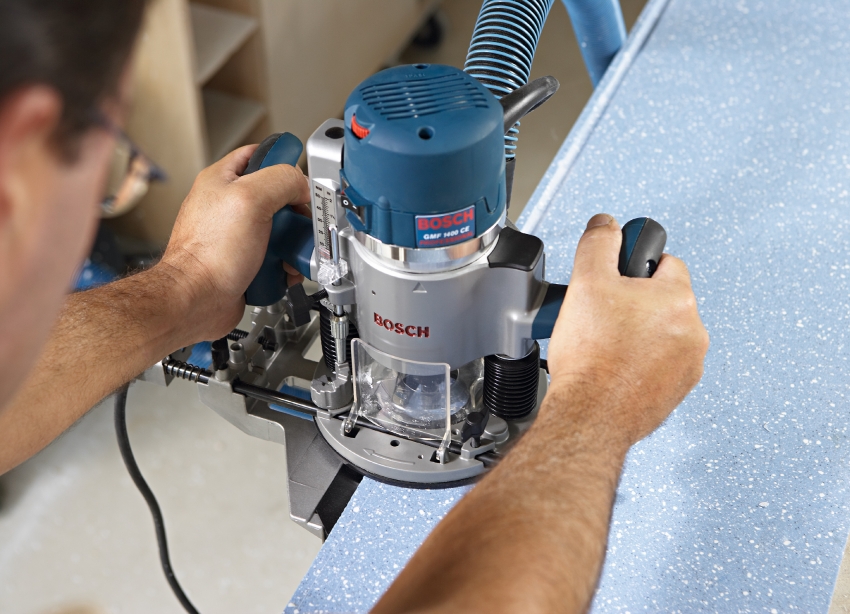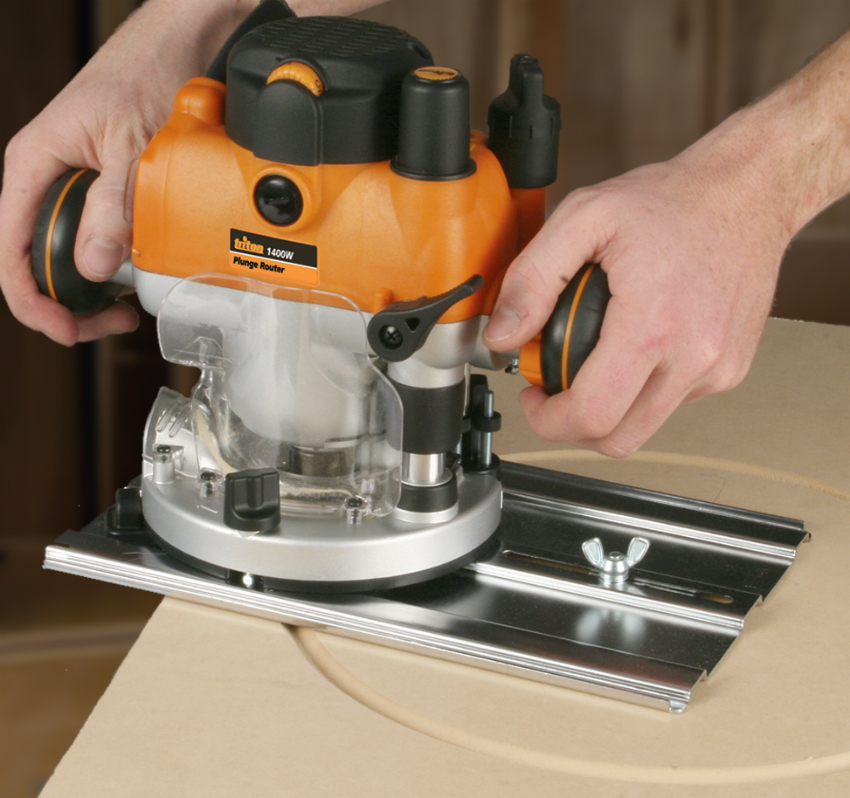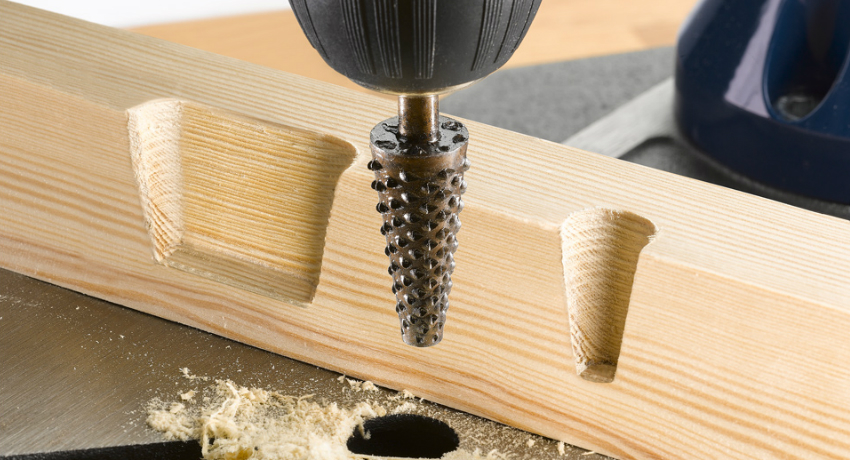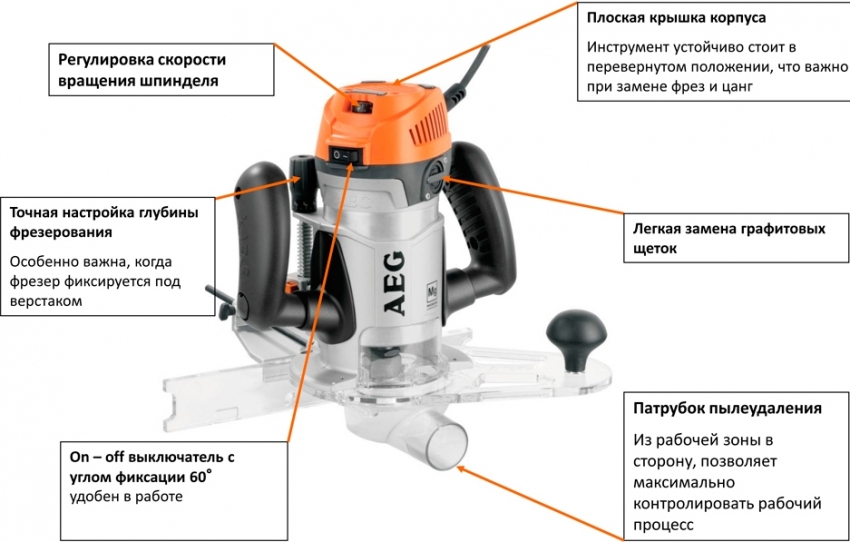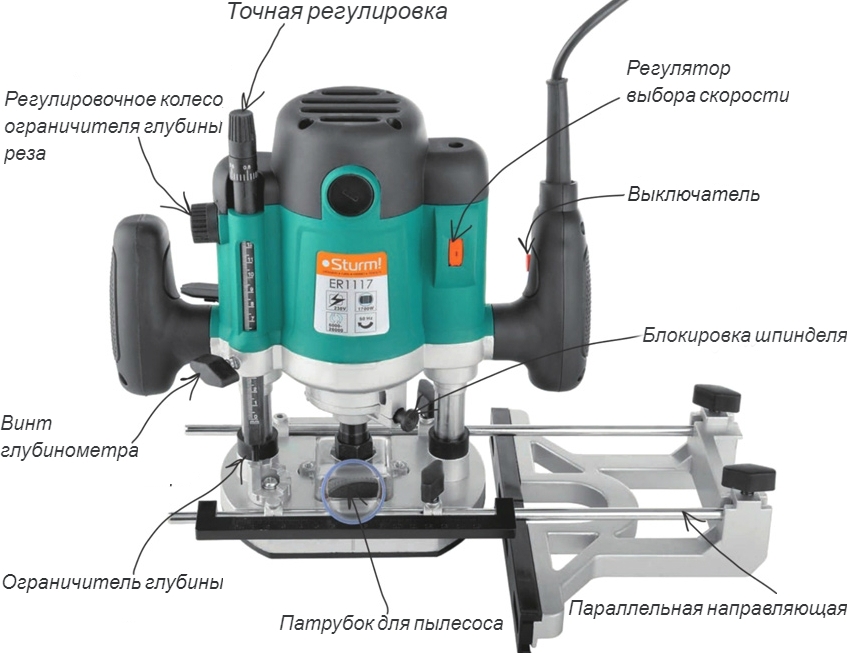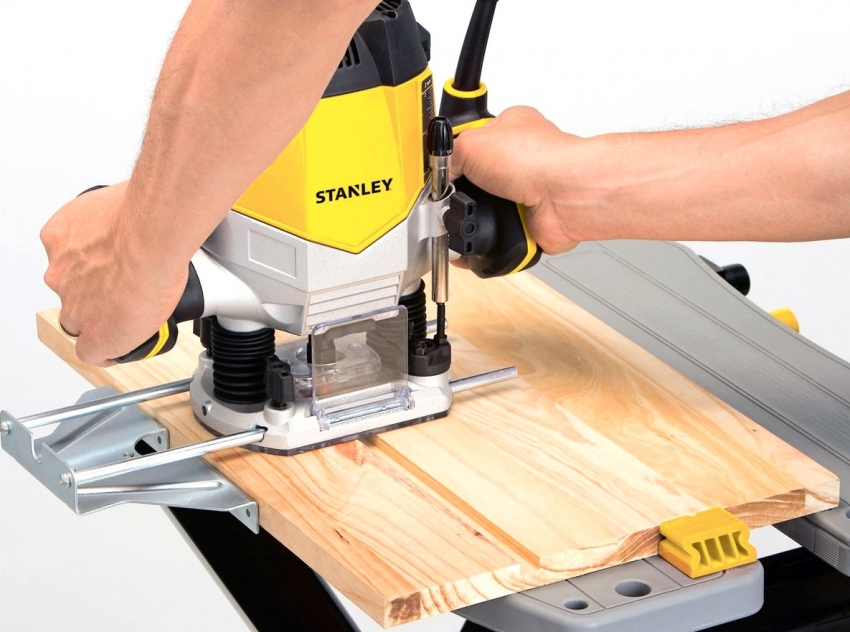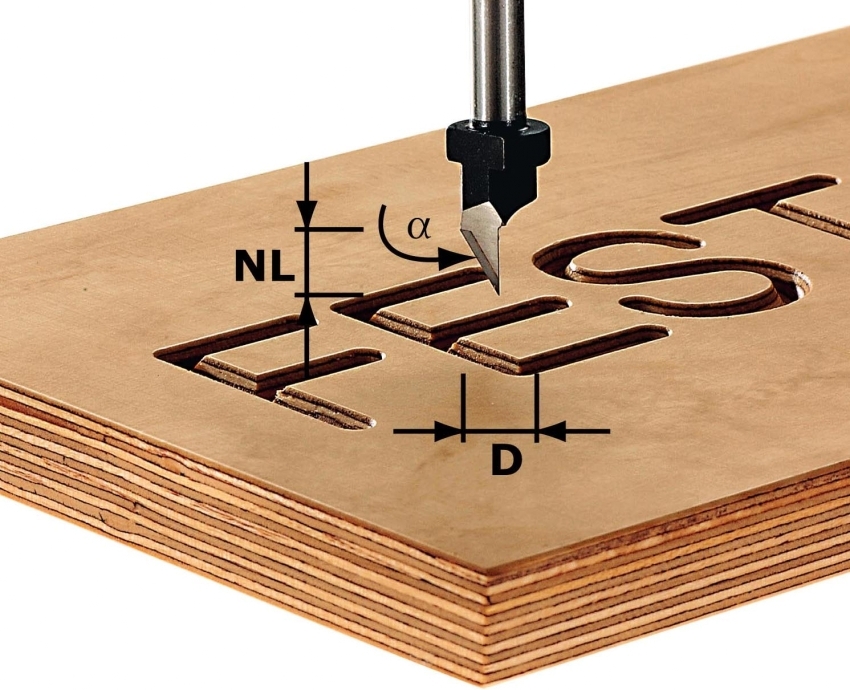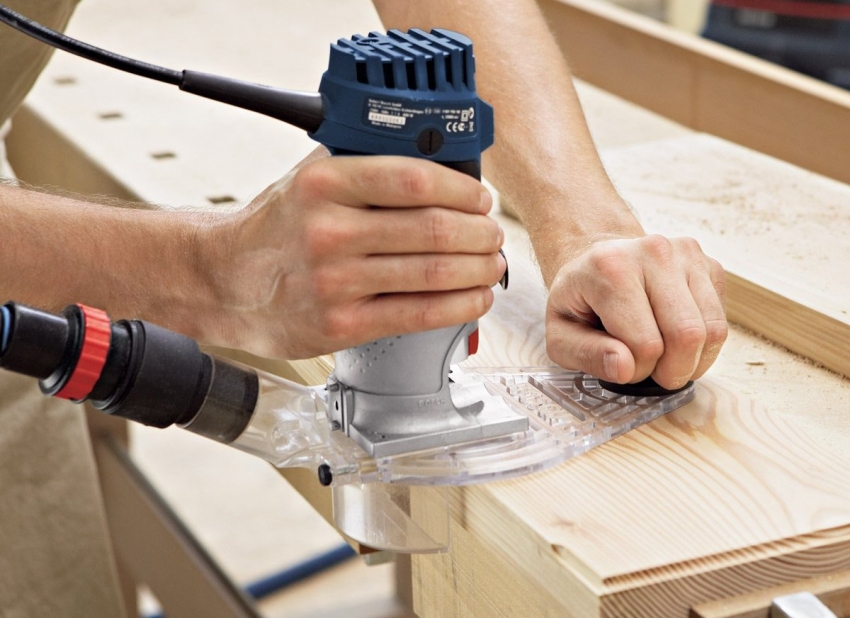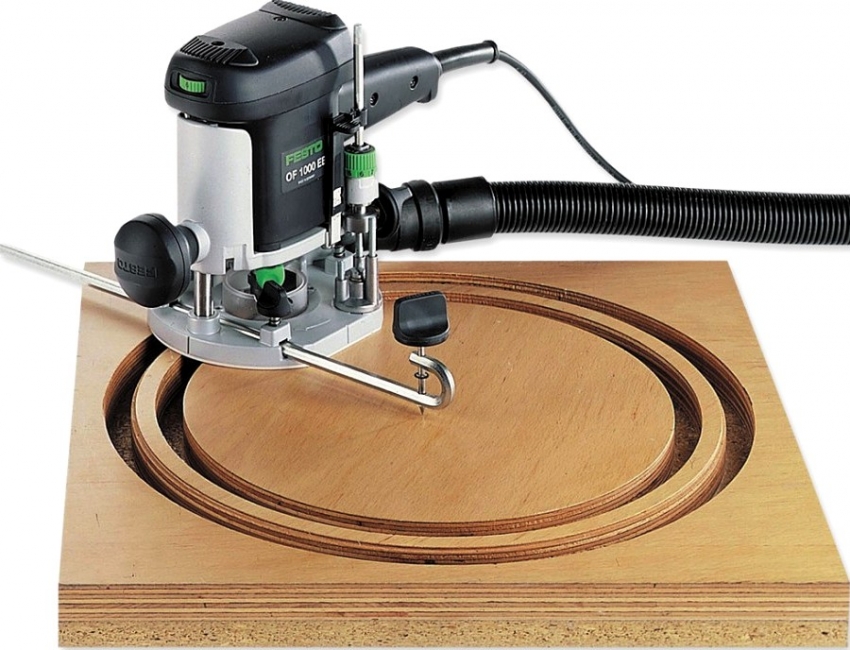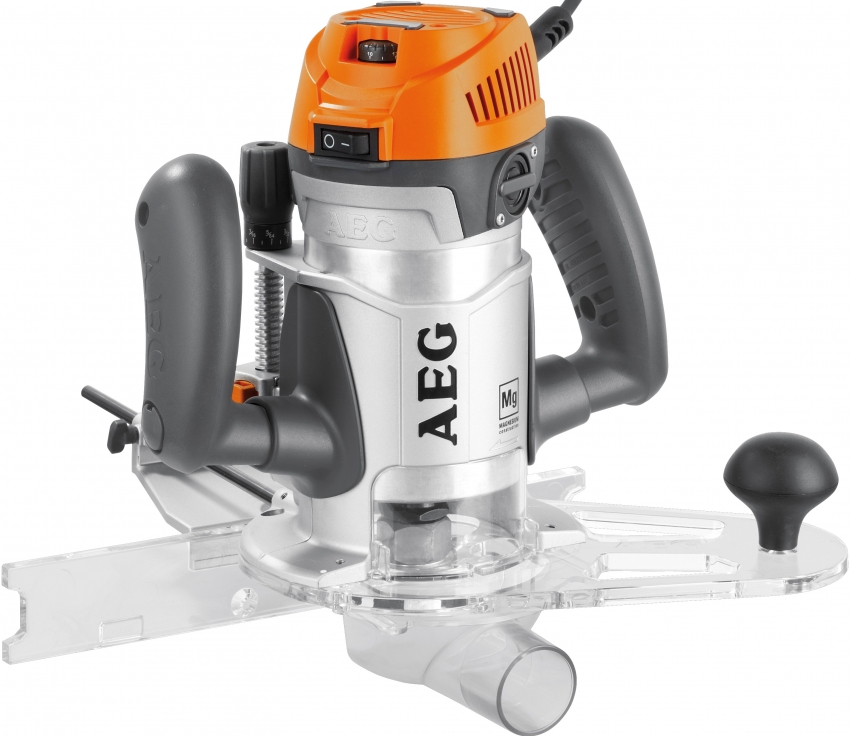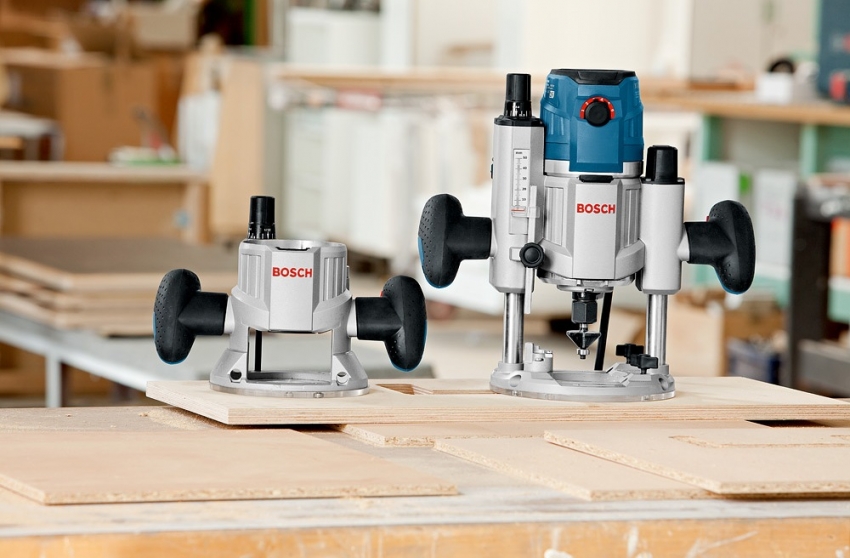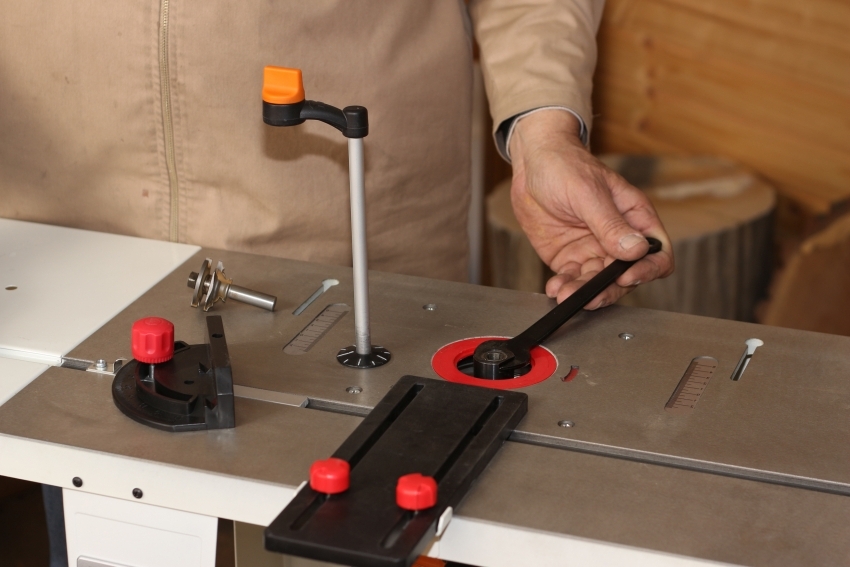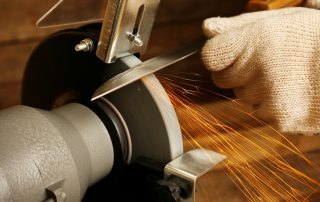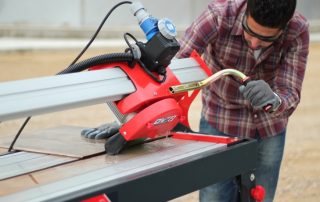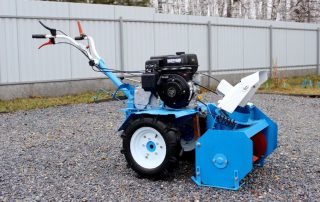From this article you can find out what features a manual wood router has: the main types of tools, their capabilities and technical parameters, as well as the components necessary for work. The text contains recommendations that will not only help to determine the choice of a suitable hand router, but also effectively use it in practice.
Content [Hide]
- 1 Manual wood router: device and types of tools
- 2 Which is better to buy a hand-held wood router: tips for choosing
- 2.1 Buying a hand-held wood router: which tool to choose according to power
- 2.2 Choosing the optimal rotational speed of the spindle for work with a hand-held wood router
- 2.3 How to choose a handheld router for wood in terms of working depth
- 2.4 How to choose a hand router: an overview of additional functions
- 2.5 Choosing a hand router taking into account design features
- 2.6 Choice of accessories for the hand router
- 2.7 Choosing a manual wood router: consumer reviews
- 2.8 Choosing the best handheld wood router: the price of popular models
- 3 How to make a milling table for a hand router with your own hands
- 4 How to work with a manual wood router: video instructions and recommendations
Manual wood router: device and types of tools
Not only professional carpenters are engaged in woodcarving with a hand router. The possibilities of this tool will come in handy for furniture makers and master finishers. The main purpose of the router is wood processing. Although many modern models are able to cope with other materials.
Consumers can buy a handheld router for processing:
- artificial stone;
- plastic;
- composite materials;
- plexiglass;
- non-ferrous metals.
The scope of this tool extends to the manufacture of decorative products and furniture from wood, carpentry. Crafts created by a hand router look very impressive. These unique products are widely used in everyday life. With the help of a milling cutter, craftsmen make beautiful picture frames, caskets, children's toys, decorative shelves, etc.

With the help of a router, you can make wooden furniture, kitchen utensils, lining, baseboards, decorative crafts and other products.
What can be done with a hand router:
- sampling of quarters;
- the formation of such structural parts as folds, grooves, spikes, splines;
- profiling of the edge part (figured and straight);
- formation of seats for the installation of fittings and locking mechanisms on doors;
- decorative wood carving with a router with appropriate attachments;
- making holes;
- fitting parts to be connected;
- alignment of contours in a rough way.
Types of wood milling cutters: device classification
To decide which router is better to buy for your home, you should familiarize yourself in detail with the existing range of these devices. The choice of the device depends on the type of proposed work, their complexity and volume. For example, the need to use a router in furniture production arises constantly, while in a home workshop such a tool will only be required from time to time.
There are the following types of milling cutters:
- top type;
- edging;
- lamellar.
Devices of the upper type can be fixed and submersible. The second option is universal, and therefore the most widely used. For a home workshop, a submersible design is best suited. It is this category of devices that should be considered in more detail in order to decide which router to choose for specific tasks.
Note! A lamellar cutter is used to form grooves on the surface of workpieces. This device belongs to the category of a highly specialized instrument that has a small number of functions.
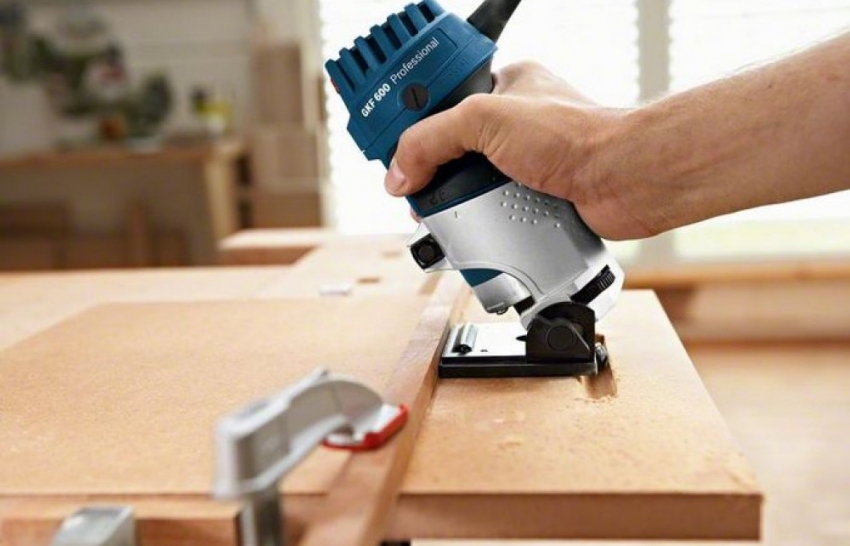
The bevelling router is used for chamfering, rounding edges, forming decorative grooves, and for cutting out hinge grooves for furniture
When compared with other types of hand-held power tools, the router has the simplest design. No belts, gears or other components are used to transmit torque. The router bits are installed directly on the spindle (electric motor shaft). Due to this, a set of high speeds is provided.
The body part of the electric milling cutter is called the "head". It moves along the guide rods, which are rigidly fixed on the support platform, down and up. When the handle is pressed, the head of the tool moves down. If the pressure is released, the springs will return the structure to its original position.
Attached to the spindle cutter... A collet clamp is used to fix it. When the head is smoothly immersed in material or wood, the depth is adjusted with a special stop. With further movement of the router in the horizontal direction, a groove is drilled using the sharp edges of the router.
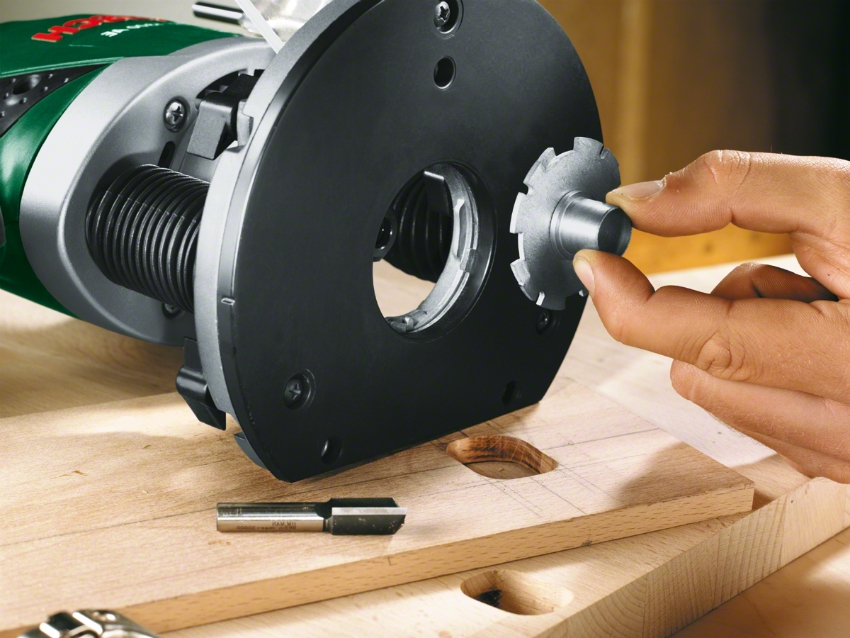
A cutter for a hand router is selected based on the type of material being processed and the type of operation
Which is better to buy a hand-held wood router: tips for choosing
When choosing a router for a home workshop, it is advisable to pay attention to the technical parameters of the devices.
Main selection criteria:
- power level;
- the depth of wood carving with a hand mill (cutter working stroke);
- additional functionality;
- spindle rotational speed;
- the price of a hand router.
Buying a hand-held wood router: which tool to choose according to power
The capabilities of the tool largely depend on the power level of the engine. The higher this figure, the longer the router will be able to work continuously without overheating. In addition, high power tools allow the use of cutters with the largest possible length and diameter. However, it cannot be argued that the most powerful device will be considered the best. With an increase in this indicator, the size and weight of the tool increases.
Taking into account this pattern, the following types of milling cutters are distinguished:
- Lightweight - the weight of the structures is 2-3 kg, and the power does not exceed 750 W.
- Medium - the power level varies between 750-1500 W, while the weight is 3-5 kg, for example, a Bosch 1400 ACE router.
- Heavy - the weight of the structures exceeds 5 kg, and the power is in the range of 1500-2300 W.
To perform milling work on a regular basis, experts recommend selecting a tool with a power of at least 1.5 kW. Such a tool is able to cope with the performance of any professional task, but such a large and heavy design requires significant effort on the part of the operator. Especially if a beginner is doing the work with a wood router.
Useful advice! When choosing a tool, it is very important to stick to the golden mean. The power of the router should not be too high, but sufficient to carry out the tasks at hand. In this case, it is necessary to take into account the duration of the device's operation without interruptions, as well as the possibility of processing products made of hard wood.
Selection of the optimal rotational speed of the spindle for work with a hand-held wood router
One of the most important technical characteristics of the router is the rotational frequency of the spindle. The higher the speed at which the cutter turns, the higher the surface quality after machining. If you need to get a very accurate result of working with a wood router, it is enough to reduce the speed. Some models are designed for processing plastic surfaces. To eliminate the possibility of material melting, it is necessary to prevent overheating of the working area. To do this, use the tool in low speed mode.
Most of the models have a rotational speed in the range of 20-30 thousand rpm. This is the middle option. Consumers can purchase both slower milling cutters - 10-20 thousand rpm, and faster models - up to 35 thousand rpm. Do not forget that the larger the diameter of the cutter, the less should be the angular velocity of its rotation. The fact is that the linear speed of a point moving along the periphery of the circle is still quite high. Therefore, there is no need for excessive acceleration of the cutter, otherwise it can lead to wood burning.
Before working as a router, you need to consider the following nuances:
- the size of the cutter that will be used at the moment;
- the density of the material from which the workpiece is made;
- required processing depth.
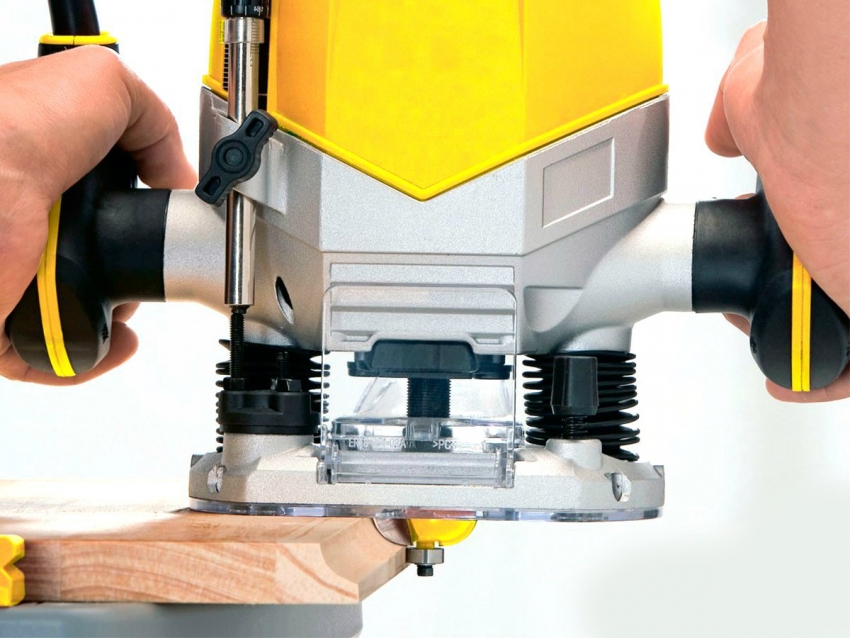
When working with a router, it is important to take into account that the higher the speed at which the mill turns, the higher the quality of the element processing.
With all of this in mind, it is best to choose a tool that has a speed control function. The functionality of the router depends on this. The setting system can be smooth or stepwise (up to 8 switching levels).
Many manufacturers indicate recommended values in the instructions that come with the tool, but it will also be useful to have practical experience. Based on it, you can choose the best device for yourself.
How to choose a handheld router for wood in terms of working depth
The working stroke of the cutter is determined by the maximum depth to which it can sink into the material. Light models of routers can penetrate the bit 2-5 cm. The level of penetration in powerful tools is 7-8 cm. The higher the stroke rate, the deeper the router can sink into the material. Devices with a high performance allow the processing of thick wood blanks.
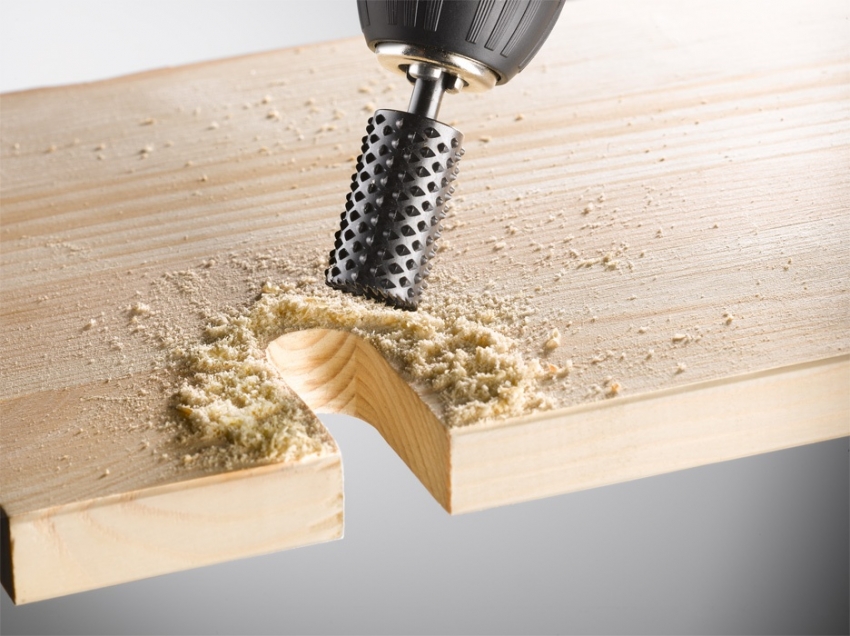
When buying a router, it is important to pay attention to the indicator of the maximum processing depth of the element.
Note! It is not possible to cut a full depth groove in one go. As a result, you can not only spoil the product, but also break the router.The harder the material to be processed, the shallower the depth of the pass should be carried out at one time.
In one pass, it will not be possible to make a groove, the depth of which exceeds the working length of the cutter. Some instrument models have a regulator with which you can fine-tune the immersion depth, for example, Skil 1840 LA. This parameter is usually set with an accuracy of 0.1 mm.
Related article:
Wood milling cutter for a hand router: varieties and characteristics of products
Classification of existing products, their features and specific use. Recommendations for the selection of cutting parts for the router.
How to choose a hand router: an overview of additional functions
When buying a router, you should pay attention to the availability of additional features and options that improve its technical or operational characteristics.
If the density of the material being processed increases or the speed of movement of the router along the product increases, the number of revolutions may decrease. To prevent this and keep the indicators at a given level, it is enough to have a constant electronics system. It stabilizes the rotational speed of the spindle by adjusting the power of the electric motor. This function will be useful for owners of professional devices. Conventional devices do not need it.
The soft start system, as in the Makita RP1800F hand milling cutter, will make it possible to set the engine speed in a smooth mode. This eliminates the likelihood that the rig will make a sharp jerk during switching on. As a result, the service life of the tool is increased, since its nodal parts are not subjected to regular, albeit short-term, overloads. The operation of the milling cutter becomes safe, and the likelihood of damage to the workpiece at the initial stage of processing is eliminated.
The overload protection system of the wood router will prevent damage to the device if the temperature of the winding on the electric motor exceeds a critical level. Depending on the model of the device, it can manifest itself in different ways: in the form of a light indication, which serves as a signal, or an automatic function that turns off the power. As a rule, such a system is provided in professional milling cutters, which are designed for continuous work in intensive mode.

The function of protecting the tool from accidental start is represented by the need to simultaneously press the start and protect keys
Protection against accidental start is another useful feature. Regardless of the cost, most milling machines are equipped with this option. There is a corresponding button on the body of the tool. The voltage will be supplied to the motor winding only if it is pressed simultaneously with the start key. As a result, the possibility of unintentional switching on of the device is excluded.
Note! TOThe safety button not only prevents unintentional starting, but also locks the trigger in the on position. This function will be useful when using a router table for a hand router.
Choosing a hand router taking into account design features
When choosing a hand router, you need to pay attention to the quality of the support platform or sole. This element can be made from cast or stamped metal. Cast structures have a clear geometry, due to which they perfectly adhere to the processed surface and provide high quality work. These tools include the Makita RP0900 hand-held wood router. It has a cast aluminum sole. Stamped platforms are equipped with inexpensive milling cutters intended for domestic use.
It is imperative to make sure that the lower plane of the platform is covered with a plastic cover.Most often, this part is removable, which allows it to be replaced with a new one when wear occurs. The size of the opening in the sole also deserves attention. This hole limits the diameter of the cutters that can be fitted to the tool. In a sole with a small opening, it will not work to install a large cutting attachment.
As the tool head moves along the vertical guide rods, it is very important that the movement of this element is light and smooth. If the structure has distortions and backlash, the use of the router will be difficult. The same goes for the excess resistance that can arise as the node moves vertically.
The depth of immersion of the cutter into the wood is controlled by the stop. It looks like a metal rod, which rests on the platform on the platform and does not allow the head of the device to fall below the set level. To set the level of penetration, it is enough to move the thrust bar down or up. For this, a special screw is provided in the design.
To perform several passes, gradually increasing the burial level of the cutter, a multistage turret stop is required. It is a platform installed on a platform and has several steps of different heights. A vertical rod rests here, which limits the depth of the cutter.
Note! In some cases, the turret stop has bolts rather than steps. For example, the Interskol FM-67 / 2200E hand router has three adjustable screws and one fixed base. Thanks to this, the device simultaneously possesses both coarse and fine depth settings.
Choice of accessories for the hand router
The milling cutter is used for rough adjustment of products. The quality of the tool and the experience of the operator determine the accuracy of the parts. To achieve the desired result, additional devices are attached to the router, which simplify the work with this device.
No job can be done without removable cutting attachments. With the help of them, you can make dovetail, straight, rounded, T-shaped and other types of grooves and grooves with a milling cutter. There are many options for such attachments.
By their purpose and design, they are grouped into categories:
- edging;
- groove;
- figurines;
- combined.
Such a device as a parallel stop, it is also called a side stop, is used to process a surface parallel to the edge of a wooden blank. Thanks to him, it becomes possible to move the tool at an equal distance from the edge. A pair of rigid metal rods and screws are used to secure the stop. The quality of the result depends on how well the structure is installed. The material for the stop is stamped and cast metal. A removable plastic cover prevents this element from contacting the workpiece.
The guide bar is another auxiliary element for straight line milling. Unlike a parallel stop, this element allows threading at any angle with respect to the edge, as well as at any distance from it. The tire looks like a profiled ruler, which is fixed on the workpiece with the help of clamps. A special shoe is attached to the tool. It guides the router by traversing the grooves of the bar.
A ruler compass for a milling cutter is used by craftsmen to make a thread along a radial line. It is irreplaceable when you need to make a round table top. On the one hand, the compass ruler is fixed in the tool sole with screws, on the other hand, it is fastened with a pin through a hole formed in the workpiece.It should be in the center of the circle.
Useful advice! In order to keep the cutting area clean during operation, it is advisable to use a vacuum cleaner that is connected to the router using a nozzle.
Choosing a manual wood router: consumer reviews
Before you go to the store to buy a router, it does not hurt to get acquainted with the opinion of consumers about certain manufacturers, as well as specific models. The opinion of buyers who have tried the tool in operation will allow us to weed out devices that have flaws that can only be identified during operation.
Customer reviews can be found on forums or online stores:
“Not so long ago I got an Aeg MF 1400 KE 411850 milling cutter. Such a tool is just right for a home workshop. The device is very quiet. Even under intense loads, it is no louder than a vacuum cleaner. I easily do edge work in one pass. For greater efficiency, I had to buy a table for a hand router. Moreover, I did the installation of the tool with my own hands, which made me very happy. The cutting depth is very easy to adjust.
I haven’t had to work with panels yet, but I think the tool will cope with it. Thanks to the video tutorials, I already use the manual wood router to the fullest. Therefore, I find this model a suitable option for newbies. "
Igor Ivashin, St. Petersburg
“I wanted to buy a small tool for small jobs. My choice fell on the Interskol hand-held wood router, the price of the FM-40 / 1000E unit is more than acceptable - only 4100 rubles. With its light weight, the design develops sufficient power. I didn't notice a slight backlash right away, but considering the cost, I can't call this a significant drawback. When I tried the router at home, the tool showed itself well. Let's see what happens over time. "
Sergey Leibovich, Moscow
“Several years ago I thought about creating a workshop in a garage. Among other things, I bought a milling cutter. The purchase of the instrument cost me almost 20,000 rubles. But, despite the high cost, the Makita 3612 C manual milling cutter completely beat off its price. It is the most reliable and indestructible tool that I have ever got my hands on. The only thing missing from this model is the ability to precisely adjust the height. The rest of the instrument is good. "
Evgeny Novokshanov, Yekaterinburg
Choosing the best handheld wood router: the price of popular models
For consumers wondering which handheld router for wood is better, prices are not the least important, as the size of the personal budget can act as a deterrent for most buyers.
Rating of the best models with prices:
| Device model | Power level, W | Ranking position | price, rub. |
| Bosch GMF 1600 CE | 1600 | 1 | 33600 |
| Makita RP1800F | 1800 | 2 | 19420 |
| Hitachi M12V2 | 2000 | 3 | 17500 |
| Skil 1840 LA | 1300 | 4 | 5950 |
| Bosch GKF 600 Professional | 600 | 5 | 10900 |
| Makita 3709 | 530 | 6 | 5250 |
| Hammer FRZ710 PREMIUM | 700 | 7 | 7500 |
| DeWALT DWE 6005 | 600 | 8 | 12620 |
| Makita PJ7000 | 710 | 9 | 15000 |
| Bosch GFF 22 Professional | 670 | 10 | 36500 |
Useful advice!To increase the comfort of using the tool, it is advisable to buy a milling table for a manual router or make it yourself. It will allow you to easily and quickly operate the device without being distracted by holding the workpiece to be processed.
How to make a milling table for a hand router with your own hands
Any master can independently make a table for a hand router, video materials and ready-made drawings on the network are enough for even a beginner to cope with this task.
For work you will need:
- wooden blocks with a square section (4 pcs.);
- plywood and chipboard;
- fasteners (hinges, bolts, nuts, etc.);
- jack;
- metal profile;
- steel plate 6 mm thick;
- aluminum guides;
- movable carriage-stop, which will serve as a guide;
- milling cutter.
Instructions for making a table for a hand router with your own hands
For the table, you will definitely need a drawing indicating the position of the parts and their sizes. From the bars and scraps of chipboard of the appropriate size, supports are twisted, which will serve as table legs. To increase the rigidity of the structure, plywood connecting panels must be installed horizontally. A hole should be cut on the right side of the table, where the start button on the router will be displayed.
For the manufacture of countertops, you need to take chipboard. This part must be lifting, so you need to install the hinges. You will also need to make an additional support base. The base of the table for a hand router is best made of plywood sheet, 15 mm thick. Next, in the tabletop, you need to cut a groove designed for the guides of the movable stop. A metal profile should be installed here. To make it convenient to move the workpiece along the table during operation, it is advisable to use a movable stop carriage. A saw guide will work instead.
For the manufacture of a longitudinal stop, you need to take a chipboard. To ensure the mobility of this element, perpendicular grooves must be cut in the upper part of the stop, after which it must be attached to the tabletop using the clips. A small groove is cut in the middle. It will be used to dispose of chips and other particles that form during the milling process.
Then you need to assemble a box of thin plywood with a hole designed to connect a vacuum cleaner through a hose. This machine will give off shavings and dust. The box is fixed behind the perpendicular stop. After that, a 6 mm thick metal plate is screwed to the table top so that their levels coincide. This is where the router will be installed.
Note! When securing the plate, care must be taken that its edges do not protrude above the tabletop. Otherwise, wooden pieces will cling to them.
The tool is attached to the bottom of the plate using an aluminum base. For fixing, you can use bolts for which you need to make holes first. This method of fixing is convenient for changing attachments and saves the milling depth. Using a car jack, you need to design a lift for the router. It can be used to control the height. It is necessary to remove the handles from the router and screw in their place the aluminum guides, which subsequently need to be connected to the jack.
How to work with a manual wood router: video instructions and recommendations
To learn how to work with a manual wood router, it is advisable to study well the structure of this tool and the purpose of each part. Some parameters of the device need to be adjusted. To adjust the milling depth, use a scale and a knob. One step corresponds to 10 mm. In addition, you must immediately set the rotational speed of the cutter.
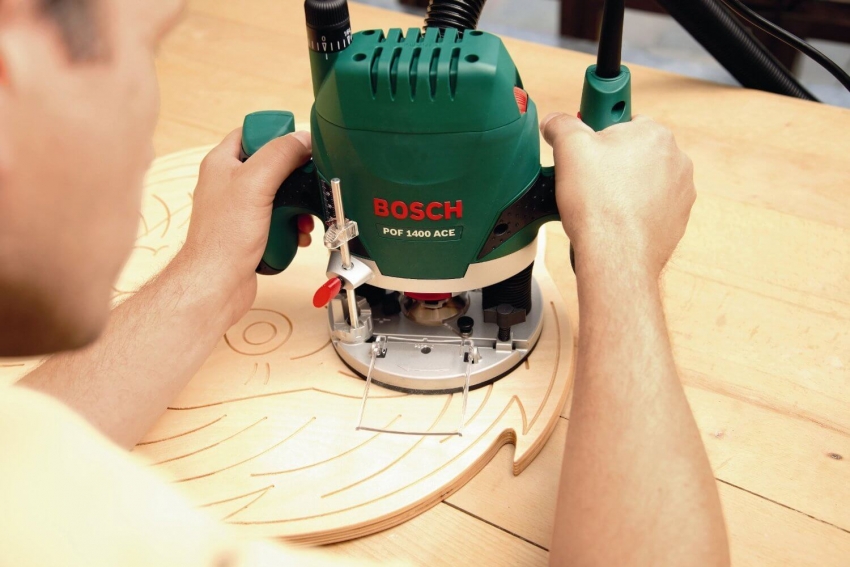
With the help of a hand router, you can perform a wide variety of operations, which you can read about in the instructions for use
Before working as a wood router, a beginner definitely needs to get used to the tool and master its capabilities. It is advisable to start at low to medium speed. However, do not forget that in this mode the processing quality is significantly reduced. Therefore, the first tests should be performed on inconspicuous areas where errors can be masked.
In the initial stages, it is not enough to learn how to work with a hand router. The novice master must adhere to the safety requirements.You need to clearly know where the start / stop button of the tool is located, as well as its lock. These elements are very important because the safety and quality of work depends on them.
How to adjust the rotational speed for a handheld wood router
Tool setting depends on the characteristics of the material to be processed. The router does an excellent job of cutting composites, plywood and wood. Taking into account the characteristics of the material, the rotational speed of the device is selected. Most often, the technical documentation that is attached to the tool already contains the necessary information.
Parameters for speed setting:
| Cutter diameter, mm | Processed material | Speed steps, mm |
| 4-10 | Hardwood (oak, beech) | 5-7 |
| 12-20 | 3-4 | |
| 22-40 | 1-2 | |
| 4-10 | Softwood (pine, spruce) | 5-7 |
| 12-20 | 3-6 | |
| 22-40 | 1-3 | |
| 4-10 | Drywall | 3-7 |
| 12-20 | 2-4 | |
| 22-40 | 1-3 | |
| 4-15 | Plastic | 2-3 |
| 16-40 | 1-2 |
Useful advice! There is a lot of information on the network on working with a wood router, video materials can be used as a visual aid in the absence of experience in setting up and operating the tool.

It is necessary to adjust the rotational speed of the tool depending on the characteristics of the material being processed.
How to fix the nozzle before working with a router: video and recommendations
Working with a router begins with installing and securing the cutting attachment. It is very important to comply with safety requirements. All actions are performed only when the cord is pulled out from the mains.
Usually the tool has marks to help you position the cutter. If they are absent, the element is set to a depth not less than its own length. Each model of the milling cutter is accompanied by technical documentation, which describes the mechanism for the correct installation of the cutting nozzles. There are no general rules for the tool, as each modification has its own design features.
Some models have a fairly simple structure, others are more advanced. On sale there are modifications equipped with a button that blocks the rotational movement of the shaft. The presence of this part greatly simplifies the process of installing the cutter.
There are special cracks in expensive models of the tool. Therefore, there is no single instruction. To install a cutter on a specific model, you can use the technical documentation provided by the manufacturer, or watch a video of the work of a manual wood router on the Internet.
How to work with a manual router: video and tips for using the tool
Using the router will be completely safe, and the result of the work will be of high quality, provided that all safety requirements are met:
- the tool must be sharp, otherwise the quality of processing will decrease and the engine will warm up;
- before starting work, the workpiece material must be well fixed;
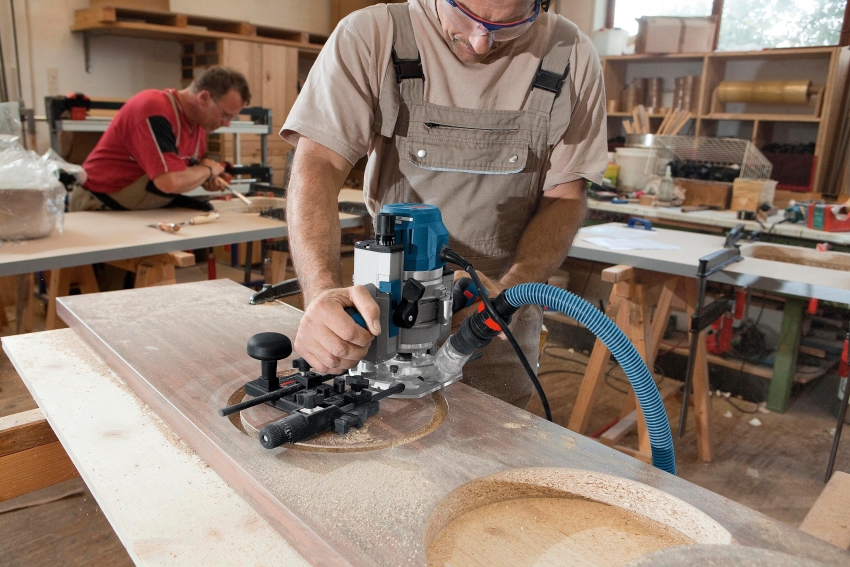
When working with a hand router, it is necessary to adhere to safety rules, for example, use protective clothing and secure fasteners for the workpiece.
- you should not try to complete the task in one pass, as a result of this, the loads on both the cutter and the tool as a whole greatly increase;
- the replacement of the cutter is carried out only on a de-energized device, it is not enough just to turn off the device with a button, you need to unplug its cord from the socket.
Compliance with these requirements will ensure safety during operation. It is very important to feel the instrument in your hands and get used to it. If the work of the router is accompanied by strong vibrations, you need to stop and find out the cause of this phenomenon. Sometimes it is enough to adjust the rotational speed, and in some cases it may be necessary to replace a dull bit. A novice craftsman can find many video reviews where experienced craftsmen show the process of making individual parts and even full-fledged products.
